“Nomad Outpost? Wait, what card is that?”
-Josh Utter-Leyton, non-ironically
It was a tough tournament for Team BMKGaming.
The squad, which officially consisted of myself and Brian Kibler, played Mardu. We worked with a bunch of other people, but they all wanted themselves to
be called something stupid like “The Back Nine,” “Tight Goose,” or “Manfield of Dreams.”
I guess everything started when I was chastising various team members for all wanting to play the same Abzan at #SCGINDY. My rationale was that if we were
going to use the tournament as testing (as opposed to trying to make a quick buck), we should play different decks. The only person who seemed to agree
with me (probably because he’s not a greedy savage) was Michael Majors.
“What should I play instead?” he asked me. “G/W, duh.” I replied.
Justice was served when the only two people to make Top 8 out of our team were Majors and myself. However, that’s when I started wondering about the
butterfly effect. What if Majors didn’t play G/W Megamorph? Would the world have figured it out by the time the PT rolled around, or did we just destroy
our best chance of doing well in the Pro Tour by playing a deck in a tournament that we basically already knew was good?
There was no use crying over spilt Canopy Vistas, so we soldiered on. We built Jeskai and eventually built decks to beat it. We refined G/W Megamorph, but
didn’t quite know how people were going to attack us. Still, it was our number one deck despite it finishing first and second at #SCGATL. Around that time,
I built R/G Landfall, cut Wild Slashes, added Den Protector as per Ross Merriam’s suggestion, and Corey Burkhart took over the tuning process from there.
Our team splintered off into various camps, each working on their own green deck. I liked both decks well enough, but also knew them well enough to know
that both of them had huge weaknesses. G/W Megamorph did not do well against fliers or board wipes, while R/G Landfall was weak to people with brain cells.
Neither was a deck that I would be happy registering for a Pro Tour.
Brian Kibler spent most of his time jamming various Woodland Wanderer brews, but eventually picked up the Mardu Dragons deck we built to smash G/W
Megamorph with. I didn’t have any better ideas, so I hopped on board also.
This is what I played:
Creatures (14)
- 4 Seeker of the Way
- 2 Kolaghan, the Storm's Fury
- 2 Soulfire Grand Master
- 4 Thunderbreak Regent
- 2 Hangarback Walker
Planeswalkers (3)
Lands (26)
Spells (17)

This deck was a steaming pile.
I thought I was over the whole “making bad decisions” thing, but I guess there are some lessons you can’t relearn enough times.
“If I register a painland at this Pro Tour, something has gone horribly wrong.”
-Me, after first playing with a fetchland / Battle land manabase
Mardu excited me for a bunch of strategic reasons, but the real reason was Mardu Guy. Every other tournament, there seems to be some random guy in Top 8
playing Mardu. It’s just a deck that is never respected but does well frequently, despite the pilot being of unknown quantity and the decklist being
suspect.

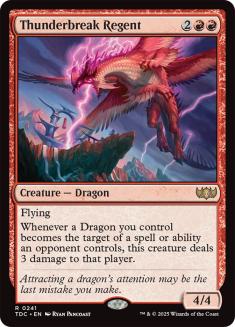
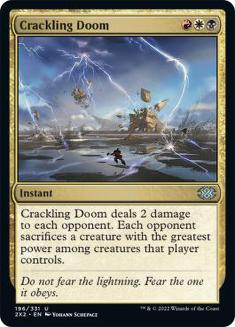
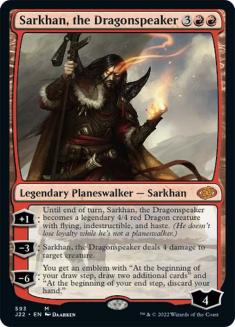
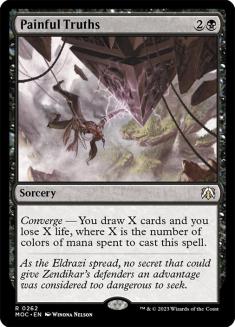
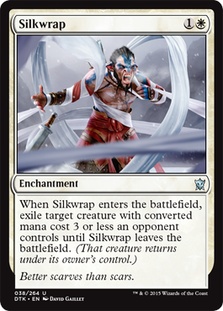

“You’re right, it could be you! The only difference is you played! Use promo code “MARDUGUY” for 12 byes into Top 8!”
-Josh Cho, upon hearing the theory behind Mardu Guy
Several of my losses in high profile tournaments last season were at the hands of Mardu. I probably lost to that color combination more than any other.
There’s a lot of power in Mardu, and I thought we could build the deck to beat both G/W Megamorph and Jeskai. Past those two, what’s left? Atarka Red (or
R/G Landfall if you prefer) and the various flavors of Esper? Once thing I learned from testing was that I liked having the combination of Duress, Painful
Truths, and Radiant Flames because it made defeating the polar ends of the spectrum much easier.
Radiant Flames used to be the best type of card against Atarka Red, but now that they’re killing you with the Temur Battle Rage / Become Immense combo, it
doesn’t help as much as you’d think. Similarly, Arashin Cleric is not a potent weapon against them either. Still, Radiant Flames served me well, and
registering that card isn’t one of my many regrets from Pro Tour Battle for Zendikar.
Duress is unbelievably good right now and I couldn’t be happier that I registered four of that card. My only regret was that it was with a deck with a pile
of Grizzly Bears and Shivan Dragons and not in a deck that is remotely playable. So it goes.
Against decks like G/W Megamorph, you want to snipe their Gideon, Ally of Zendikar before it drops. Against Atarka Red, you want to hit one piece of the
Blood Lust / Berserk combo. Against control, you want to punch a hole, typically through Ojutai’s Command. Duress isn’t Thoughtseize, but it also doesn’t
cost you two life, so it’s not strictly worse or anything. I’m sure at some point, the format will shift and Duress won’t be as great anymore. Right now,
it’s basically good against everything, at least in small numbers.
So why was this deck so bad? As I mentioned earlier, my deck was Grizzly Bears and Shivan Dragons, and that’s not a very potent combination. I operated
under the assumption that Seeker of the Way and Soulfire Grand Master would be reasonable bodies, but they got outclassed so quickly. The Dragon portion of
the deck was fine, but Thunderbreak Regent was mostly a bad Pia and Kiran Nalaar.
On top of it all, my deck contained a bunch of painlands. The night before the Pro Tour, I flirted with a fetchland + Battle land manabase that looked
solid, but I never seemed to have enough white mana. Frequently I’d have all my colors, but only be able to cast one spell per turn, and that was
unacceptable. I knew the “old” three color manabase was passable, so I decided to stick with it despite knowing that it wasn’t perfect. That alone should
have sent up red flags.
During the entire tournament, I took less than five damage from painlands. That was probably a combination of me running somewhat well and also playing too
many land. There were certainly periods where I felt flooded, but the deck was so mana hungry most of the time too. If I had to register roughly the same
manabase again, I would stick with 26 land. There were times when I considered siding out a land on the draw, but the games where I was stuck on three mana
made me reconsider every time. I think the true solution is to play a deck that isn’t as erratic as this one.
My removal suite was supposed to be great, especially since Draconic Roar and Crackling Doom typically chip shot your opponent, but they ended up being
nothing special. I opted for multiple Murderous Cuts because having a one-mana spell was very important. Murderous Cut wasn’t always one mana, but if I
were able to cast it for one mana, I wanted to have access to that, which is why I played the additional copy. Compared to something like Fiery Impulse
that might not have a relevant target as the game progressed, Murderous Cut was the clear pick.
The funniest thing about it all? Crackling Doom was supposedly a great card for the Pro Tour, yet I sided it out in the vast majority of my matchups. It
was easily the worst card in my deck, and it’s possible I would have done better with B/R Dragons instead. Shambling Vent was solid, but it doesn’t work
well with the Battle lands, so I could certainly see going down that path.
Silkwrap was solid. Hangarback Walker gave me a lot of problems, so it’s possible I should have included even more Silkwraps. Sarkhan, the Dragonspeaker
was a solid threat, and Kolaghan, the Storm’s Fury tended to end games quickly, but I also felt like I had a lot of top end at times.
The messed up part of all of this? I’ve done this before. I’ve played Duress, Radiant Flames, Painful Truths in a Pro Tour before, which was Pro Tour
Theros, and I got crushed! Now, my deck wasn’t well-tuned or anything (and basically resembled a bad Mono-Black Devotion deck), but this Mardu deck wasn’t
tuned either! The idea seems so good in theory, but based on how proactive all the successful decks are, perhaps that plan isn’t actually very good.
Of course, there were a couple things I liked about my deck. The first was Painful Truths on top of some lifegain. Drawing three cards on the cheap can
obviously lead to some game wins, and that was typically the case for me in the tournament. Getting the velocity was huge, as it allowed me to hit my land
drops for my big plays and gave me enough gas to ensure I could use my mana every turn. Painful Truths was probably the best card in my deck.
The saving grace of the entire tournament was that I’ve recently dedicated myself to being good at Limited again. For the third premier event in a row, I
went 5-1 in Draft. Obviously that record is quite good and I’d happily take it every time, but the elusive 6-0 proves to be difficult.
If people are interested in an article about drafting Battle for Zendikar, I’d be more than happy to oblige, but that sort of thing doesn’t seem
to be very popular unfortunately. That’s a shame too, because I’ve been having a great time drafting Battle for Zendikar, and I’m actually excited
about attending the Limited Grand Prix in Atlanta, which is a rarity for me these days.
In hindsight, maybe I should have played the R/G Landfall deck the majority of my team played. On the surface, it didn’t seem very good against patient
opponents, but that didn’t seem to be the case judging by how many wins my teammates were racking up.
Perhaps I should have finished brewing Abzan Red, which is basically just Jund splashing Abzan Charm and Siege Rhino. It contained all the stuff I liked
about Mardu, but had more powerful cards overall. I’ll probably work on that deck a little bit more now that we have a real metagame.
Sam Black’s Bant Tokens deck is probably the real winner from the Pro Tour, boasting a 75% win percentage overall. His deck doesn’t care about removal, had
a powerful combo finish, and can play a reasonable control game. We worked on a bunch of Retreat to Emeria brews, but for some reason weren’t able to
figure that one out. For as much good stuff we come up with, there’s always going to be something we missed, and that makes me strive to work harder.
This Pro Tour was also painful for a few reasons:
1) I attacked a 4/4 into a 4/5. On camera. I don’t think it affected the outcome of the game considering how our draws lined up, but I’ll never know for
sure.
2) I had an on-board kill through a removal spell, but neglected to play around said removal spell. It was something that could have been avoided simply by
tapping my mana correctly. This time, I won the match anyway, but I wasn’t happy about it.
3) I didn’t 6-0 Draft and possibly could have if I played a bit tighter. Again, the situations were unclear, but I’d like to think that in an alternate
universe I could have won those games. Seeing the commentators talk about the 6-0 drafters during the Top 8 as people who were in contention for the “Draft
Master” slot at Worlds further fuels my desire to tighten up my play and get to the place where I know I can be.
I’d like to think I’m making progress, as my last few tournaments have all gone incredibly well, even if I’ve fallen short each time. This Pro Tour also
gives me hope in that even if I have a bad Constructed deck and make several errors, I can still salvage a bad tournament with a respectable finish. It’s
not one that I’m proud of because I don’t feel like I’m “deserving,” but it is what it is and my bank account will appreciate the extra $1500.
One of these days, I’ll make a bunch of good decisions and get rewarded, but it’s going to take some time.
